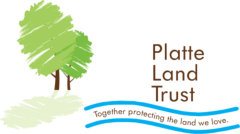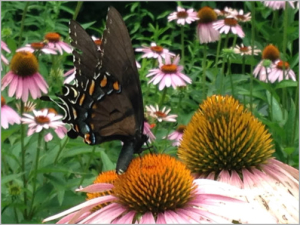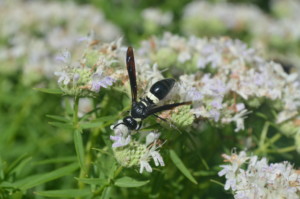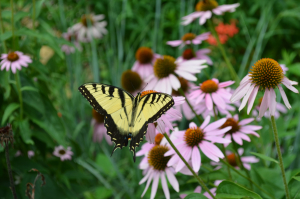Do you have bugs in your yard? Bees, butterflies, fireflies, moths, beetles, spiders, walking sticks, dragon flies, caterpillars? We want to know!
- Do you have more or fewer insects?
- Have the types of insects and ‘bugs’ living in your yard changed?
- Has the diversity (number of species) of bugs and insects diminished?
Observations from one Kansas City area gardener show 30 different species of butterflies and moths identified from 1993 to 2004. This included 5 species of swallowtail butterflies, monarchs, Admirals, fritillaries, sulfurs, skippers, buckeye, and sphinx and luna moths.
Since 2010, the types and numbers of butterflies have dwindled. So far in 2016, 5 species of butterflies have been spotted. This includes one each of giant, tiger and zebra swallowtail, plus black swallowtail caterpillars. No monarchs or caterpillars yet on the milkweed plants. The number of bees and wasps is lower than last year.
There is plenty of food and habitat since the vegetation in the yard includes mostly Missouri native plants and very little lawn. The yard has been like this for 22 years.
Monarch Watch keeps us posted on the status of this butterfly. After a brief upswing in numbers, the population has declined again. Check here for the latest information. http://www.monarchwatch.org/
It appears other insects and invertebrates are also in trouble. And scientists are studying the issue. A July 2014 article in Science magazine (http://science.sciencemag.org/content/345/6195/401) describes a 47% decline in 65% of invertebrate populations monitored. It’s called defaunation or a decrease in the fauna (animal) population.
So, tell us what’s in your yard. Send us your observations:
- Platte Land Trust at https://plattelandtrust.org/. Write a brief message in the “Contact Us” box on the Home page.
- Or leave comments on our Facebook page, https://www.facebook.com/PlatteLandTrust/.
More information can be found at:
Xerces Society for Invertebrate Conservation, http://www.xerces.org or North American Butterfly Association, http://www.naba.org/




